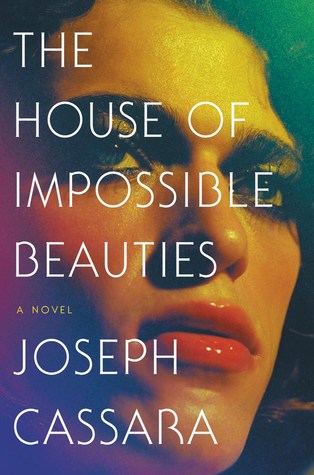
The House of Impossible Beauties
A Novel
کتاب های مرتبط
- اطلاعات
- نقد و بررسی
- دیدگاه کاربران
نقد و بررسی

Starred review from August 1, 2017
This exceptional first novel opens in 1980 New York with 16-year-old Angel feeling trapped in her boy body. But she does something about it: she starts wearing women's clothes, which brings out the rage of her hard-drinking mami, and introduces herself to larger-than-life diva Dorian. Then there's Thomas, first introduced as a Barbie-loving boy from Staten Island and next as a runaway named Venus, who's saved from a beating by Daniel. Venus takes him home to her family of trans outsiders, which includes Angel as mother and handy-with-a-sewing-machine Juanito, with whom Daniel finds love. But all families have their problems, and this one faces more than its fair share, starting with the advent of AIDS. The writing is erotically luscious, lyrically intense, forthrightly in your face, and pitch-perfect in the dialog, and the suspense comes from wondering what's going to happen to these people. When Dorian tells friend Keith of one of his AIDS-inspired paintings, "Where is the beauty?" Keith responds, "You're telling me that I need to turn this virus into something beautiful?" Taking on the difficult lives of his characters, that's exactly what Cassara has done. VERDICT A grittily gorgeous work for readers who don't go for cozies.--Barbara Hoffert, Library Journal
Copyright 2017 Library Journal, LLC Used with permission.

November 1, 2017
A first-time novelist visits queer Harlem in the 1980s.Founded in 1982, the House of Xtravaganza was the first strictly Latinx house to join New York's ballroom community, the gay subculture brought to the popular consciousness in 1990 by Madonna's "Vogue" and the film Paris Is Burning. Although Cassara is careful to note that his debut is a work of imagination, this is a story about the House of Xtravaganza, the people who created it, and the people who made it their home. Angel--loosely based on Angie Xtravaganza, the first "mother" of the house--is 16 when the book starts, living in the Bronx and beginning the transition from "Angel the he" to "Angel the she." A chance encounter with the gorgeous Jaime leads to the acquisition of a silver dress and satisfying sex but, more importantly, a sense of possibility. The newly liberated Angel becomes an acolyte to (real-life) drag queen Dorian Corey, which leads Angel to an affair with Hector, who will establish the House of Xtravaganza (in both fiction and fact). The word "house" is both a nod to Paris ateliers and an acknowledgement that ball culture functioned as a home to people who were not welcome elsewhere, just as the titles "mother" and "father" have a special meaning to queer, cross-dressing, and transgender kids rejected by their families of origin. As Hector and Angel build their family of choice, the novel acquires new characters and perspectives, and it presents a wide-lens view of the joys and sorrows of a culture created by racial and sexual minorities. AIDS, of course, casts a terrible shadow over the community depicted here. But this is not, primarily, a social novel. In terms of tone and style, it's closer to Valley of the Dolls than Giovanni's Room, and this feels absolutely appropriate. Glamour is a refuge to Angel, Hector, and the kids to whom they give a home. Their stories deserve a bit of glitter.Fierce, tender, and heartbreaking.
COPYRIGHT(2017) Kirkus Reviews, ALL RIGHTS RESERVED.

December 4, 2017
Angie and Venus Xtravaganza were key members of the New York drag ball scene made famous to outsiders by the 1991 film Paris is Burning. Cassara’s debut novel imagines them as runaways fleeing impoverished, unsupportive, or abusive homes; ball circuit stars embodying the glamour they craved; loving sisters and mothers to needy gay teens and each other; and grieving, jonesing, dying women. There’s also a love story between Juanito and Daniel, younger runaways whom Angel (as she’s called here) and Venus take in and teach to walk a ball and work the street. Impressionistically covering the period from 1976 to 1993, the book is long on origin stories and grief, as lovers and friends die of AIDS, johns fail to keep their promises, and cocaine and crystal meth take their toll. What it lacks, besides the ball scene, which readers see little of, is the feeling that Cassara is adding something to the story. While readers who are too young to know this history may appreciate having access to
a dramatic moment and some of the legendary figures who populated it, those for whom this is more familiar territory may find themselves wishing for more insight. Angel and Venus may get to tell their story here, but they largely come across the way they looked from afar: as strong yet fragile, street-smart, shade-throwing, generous, and ultimately doomed divas.

























دیدگاه کاربران